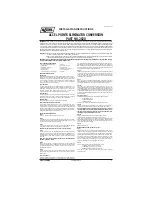
3/6
Chrome bezels frame the air vents, while aluminum-look trim accents the optional layered wood
veneers and bezels. Two optional interior lighting packages are available: one composed of
active door reflectors, lighted handles, and LED reading lights (Premium and Premium Plus) and
another ambient lighting package (Prestige) that utilizes LED lamps to highlight door pockets,
sills, and center console – all of which can be configured to suit the owner’s taste.
The Audi A7 is available with two types of leather – Milano or Valcona – which color-coordinate
with the four-spoke steering wheel and transmission selector lever. Fine grain ash wood veneers
are standard while dark brown walnut and brushed aluminum trims are optional. The seat
coverings are available in black, titanium gray, nougat brown and velvet beige, while the
headlining is available in black, lunar silver and silk beige.
The rear hatch is equipped with a height adjustable power-lift system that opens with the touch
of a button, revealing a large luggage compartment capable of holding 24.5 cu ft. in its base
configuration. Fold the 60:40 split rear seats forward and the A7 reveals an expansive cargo
area with a flat floor that provides excellent functionality surrounded by stunning design.
Body
Audi continues to pioneer the use of aluminum, high-end steel and lightweight materials on the
A7. Boasting a hybrid aluminum construction that melds the lightweight metal with high-end
steels of various strengths, the Audi A7 weighs roughly 15 percent less than a comparable all-
steel body.
Along with a variety of engine compartment and chassis components, the front fenders, hood,
rear hatch and doors are made of aluminum, meaning that more than 20 percent of the Audi A7
body is made of the weight-saving material. But light weight doesn’t come at the expense of
rigidity, comfort, or safety. As a result, the body provides a firm platform for precise handling, low
vibration and excellent crash protection.
Vibration levels at the contact points between the passengers and the body – the floor panel,
seats and steering wheel – were painstakingly minimized. The interior is largely decoupled from
the road and engine noises, thanks to hydraulic damping elements on the axles, subframes and
bearings. All these elements were tuned using the Audi comfort test bench, a development tool
found nowhere else in the world.







































